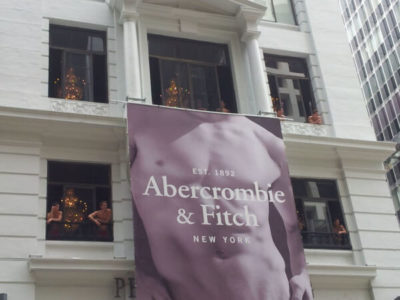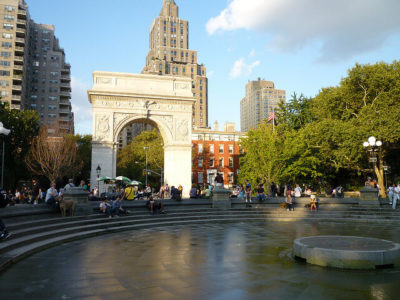Most people can’t say “Abercrombie” without a scowl on their faces. We don’t generally talk about the brand or why we’ve come to have such a viscerally negative reaction to it, but we all seem to understand why.
Unlike the fond memories of the trinkets and brands we donned in middle school that are now considered millennial vintage, Abercrombie and Fitch, the former unofficial marker of popularity, is a reminder of homeroom gossip and being excluded. In a world where the moose insignia ruled the hallways between classes, we all seemed to desire and reject the brand at the same time.
Stained with a history of elitism, the brand has become well known for classic American style with a side of sizeism (Who were they making those x-small sizes for, dolls?). In the past few years, even a mention of Abercrombie elicited audible disgust, but now the brand we thought we left behind in middle school with unsightly retainers and acne is chasing us down and trying to get back into our good graces.
The early whispers of rebranding, which started at the beginning of 2015, have now been realized. The question is not whether Abercrombie and Fitch can reinvent itself, but if we millennials can reimagine the brand. Instead of catering to pre-teens and teens, Abercrombie is targeting us, trying to grow with us. Those of us who graduated high school after 2010 and before 2014 and lived through the height of Abercrombie mania haven’t yet graduated from the AF branding. Are we the Abercrombie generation? The study “Millennial (Gen Y) Consumer Behavior, Their Shopping Preferences and Perceptual Maps associated with Brand Loyalty” by Güven Ordun shows that Generation Y consumers purchase products that help define who we are. As a result, we are likely to stay loyal to the brands we build relationships with.
It seems that students have differing opinions regarding why we stopped being loyal to Abercrombie. “I used to wear Abercrombie, but it doesn’t bring back good memories, honestly.” Communications major Greg Thomas said. “I think a lot of people depend on certain branding to define themselves and in some ways that was helpful for adolescence, but I don’t think it’s necessary anymore. It just makes me think about conformity, regardless of the direction they’re taking it in.” Thomas has now graduated to brands that feel more authentic to his personal style such as Supreme and Stüssy.
Others share the opinion that Abercrombie’s aesthetic was always pretty generic. “There was nothing special or unique about graphic t-shirts, jeans and the occasional leather sandal,” said Emma Miller, a sophomore majoring in sociology.
Not everyone agrees though. “We talk about not focusing on brands all of the time because somehow it’s supposed to make us better people, but isn’t rejecting clothes from Abercrombie simply because they’re Abercrombie contradictory? If the clothes are good, I’ll wear them,” sophomore Juliet Stoddard said.
Ryan Stork, a product purchasing agent at Neiman Marcus, attributes this loss of brand loyalty to the fact that “young adults now care more about a brand’s reputation and ethics than ever before. A simple move to rebrand won’t change the fact that we regrettably learned to qualify people’s worth by the logo on their shirts.”
Additionally, there are many more brands that target consumers in the 21–34 age range. Therefore, Abercrombie is now competing with brands that have thrived on consistent business from young adults and have made a concrete place for themselves in the market. Abercrombie is a symbol for generic dressing—in opposition to individualism— and though their clothes may mimic items from brands we like, those items still make us think about the brand as generic.
Perhaps it will take a little longer to shake Abercrombie, but as we’ve fallen out of lust with the previously desired brand, it looks like we’ll be safe from that AF insignia for the rest of our lives.



















